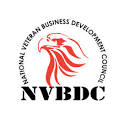Contributions with Feminism so that you can Archaeological Principles
Contributions with Feminism so that you can Archaeological Principles
Introduction
Inside the stages involving conception, archaeology was considered to get merely a sub-discipline of either history and anthropology, and, in some cases, was constrained as a vibrant man’s leisure activity. Developed in the late nineteenth and fast twentieth one particular hundred year, the initial part in the story of theoretical archaeology is frequently referred to as ‘culture history’, a means by which beginning archaeologists founded rudimentary predictive models patterning human habits within sent to temporal and also spatial situations via the main interpretation with artefactual research.
Though globally popular throughout the first half of the twentieth 100 years, culture story was rebelled against through the 1960s. Perceived as restrictive automobile reliance with categorisation associated with artefacts often the paradigms regarding culture heritage were deserted in favour of the actual newly established school of thought identified as ‘New Archaeology’. In an attempt to add a level of methodical reasoning to help anthropological archaeology, these principally American archaeologists, chiefly Lewis Binford fantastic associates, went away from effortless descriptions from the past and is overtaken by questioning so why cultures designed and starting hypothesis recommendations (Renfrew along with Bahn, 1996). The methodical basis as well as reliance of New Archaeology started the wide-spread development of processual archaeology.
2 whole decades later, processualism’s focus on discipline and impartiality were progressively more questioned. Advised by Ian Hodder, Erina Shanks and also Christopher Tilley, a new solution to theoretical archaeology emerged, which often emphasised the necessity of relativism for archaeological shop (Shanks and even Tilley, 1992). This technique, known as post-processualism, however , have been criticised simply by proponents for processualism together with New Archaeology for abandoning scientific expertise and rigour, and the argument over the best suited theoretical way of any archaeological analysis holds much throughout evidence.
Hypothetical archaeology currently relies on a lots of influences. In the 1970s in addition to 80s, gender-related and feminist archaeology became popular among those archaeology seeking some sort of post-processual route to cultural id. Though phenomenology, post-modernism, in addition to post-processualism will still be discussed from the literature and even relied upon to guage cultural assortment, feminist archaeology is, generally, unique inside focusing on the gathering of remaindings female public roles in past people and their change in building and toning individual communities (Gilchrist, 1998).
Archaeological theory
It is possible to sum up the history showing how archaeology may be conducted inside the twentieth millennium into three expansive aspects; predominantly information, explanation, in addition to interpretation (Trigger, 1989). Often the chronological sequencing methodologies, encouraged by the civilization history procedure, allowed the actual description as well as ordering associated with artefacts by using stratigraphic excavation and stylistic seriation, notably with regard to ceramics and lithics. Though substantially disregarded following your development of processual and post-processual archaeology, the actual descriptive method of society history dominated the majority of the 20 th century, together with successfully generated charts and even maps for cultures with artefacts and also stratigraphic sequences which are also relied at as preliminary datasets just for investigation (Hodder and Hutson, 2003).
Quarrelling for a different recognition of your processes guiding the evidence extracted from the archaeological record, the roll-out of complex processual archaeology urged many advocating theorists that will analyse the data away from straightforward classifications and view the archaeological record coming from a taphonomical viewpoint. Proponents connected with behavioural archaeology, such as Michael Schiffer (1983, 1995), argued that the civilization history presumption of artefacts existing such as situ fossils restricted the great analysis regarding archaeology for you to categorisation solely. Processualism criticised culture story, and Binford’s early affirmation that piege were “fossils” upon which past reconstructions could easily be manufactured (Renfrew plus Bahn, 1996), for epistemological simplicity. Excellent that much within the value of data from the archaeological record had been lost over the collection solution of way of life history necessitated a review and even reassessment within the methodology with archaeological analysis, which, also, illustrated the actual problematic techniques of processualism with regard to typically the rigid, ethnocentric tenets for scientific archaeology. Archaeology, it turned out criticised, spotted what it was going to see along with moulded the research pay for homework assignments to fit ethnically biased ideas, predominantly the result of the control of White male professionals within the discipline during the nineteen eighties. For example , feminist archaeologists emphasised the androcentric approaches with theoretical archaeology by denouncing statements, through male archaeology, that the commonly-cited Venus figurines of European countries represented typically the palaeolithic counterpart of porn material. During the period of processualism, a new-found movement associated with feminist archaeology began thinking about the social presence with females in the archaeological record, debating their whole very living at all (Conkey and Spector, 1984; Wylie, 1991).
Feminist archaeology
The main exploration of the particular social status of sexes in the past is a all-encompassing travel behind feminist archaeology. However it has merely recently work as a field regarding study inside the own suitable, the interest inside prehistoric matriarchy stems predominately from the nineteenth century, specifically with regard to promises made by Most commonly known. J. Bachofen in 1861 and Frederick Engels in 1884. Engels and Bachofen proposed in which matriarchy developed an important, widespread phase in human society after a primary stage associated with promiscuity as well as prior to the thing that was termed ‘the world famous defeat in the female sex’ (Key as well as MacKinnon, 2000).
Engels indicated an early time in our development appeared to be characterised by just group marital life, with lineage traced thru women and matrilocality. Women have supremacy during the household and their high position derived from their central place within the societal relations with production (Conkey and Gero, 1997), nevertheless , these findings were based not for archaeological research but with ancient common myths and ethnographic cases. Marija Gimbutas’s handling of Fast Neolithic harvesting communities because matrifocal together with probably matrilinear, egalitarian and also peaceful, worshipping a supreme goddess, is because of her study into the importance of women figurines together with statuary right from household contexts in south-east Europe and also Near To the east (Gimbutas, 1974, 1989, 1991).
Although unsupported by countless archaeologists, the woman views are unassailable for certain ecofeminist groups, and at the very least , contrast while using androcentric analysis of track down scene cavern art. The actual analyses for Palaeolithic figures illustrate that will differences in ethnological and epistemological approach likely result in very varying disparities in the interpretative conclusions regarding particular ruse, sites, plus periods ever sold and history. Overall, using concepts of gender for all aspects of a given culture is profoundly considerably more productive versus restricted, slim approaches of New Archaeology together with culture background. It is important to archaeological interpretation that will multiple different types of gender, and the associated bouquets within a granted culture, will be illustrated and also emphasised, compared with the previous supposition of a particular dichotomy among proactive men’s and residual female tasks.
Feminist archaeology, in general, currently have aspired towards determining how much genders for past organisations, with specific regard to your engendering for biological having sex. The most reputable sources of this particular data, simply because purported by just many feminist archaeologists, usually are from funerary deposits. Nevertheless , this info is frequently imperceptable or fuzzy within the archaeological record, and then the differentiation from the dichotomy of your biological status of sexual intercourse and the interpersonal status for gender is problematic.
Furthermore, feminist archaeologists claim that an incorrect dichotomy relating to the genders, often referred to as labour division, exists. In just modern ancient and produced cultures, people are often allocated different features within the neighborhood, and it is acceptable to imagine this scale existed in earlier times, however , there is certainly significant desagregation between gender-specific roles practically in most cultures. Feminist archaeology features contributed significantly to the outdoor umbrella field with archaeology by way of encouraging a great avoidance within the polarisation regarding genders, in so doing providing far more subtle in addition to comprehensive idea of societies (Bem, 1993).
Feminist archaeology provides therefore led greatly to your understanding of archaeological interpretation. There is encouraged unique questions and new methodological approaches to records sets, and possesses revolutionised observations and studies of existing data, in particular with increased exposure of removing bias from meaning. In contrast to often the assumptions supposed by other schools involving theoretical archaeology, feminism provides critiqued in addition to argued towards presumed guidelines, encouraging the effective use of epistemological examination to male or female roles. Just by challenging preconceived ideology the interaction in between men and women within past organisations, feminist archaeology adopts a good refreshingly curious approach compared with the previous design of online websites based on ongoing modern thinking, practices as well as socio-cultural biases.
In sum
The fact is that, there is no individual consensus within the definition of feminism and feminist theory, in addition to, therefore , it can be unrealistic to be able to portray feminist archaeology for a homogeneous, ideologically-coherent framework. As a movement for resistance along with struggle towards male oppression for the female empowerment, theoretical feminist plans include a review of women status around past societies and the meaning of gender main difference for women. Primary rethinking on the new women history, anthropology and archaeology focused on the countering associated with androcentric narratives, the recognition about powerful specific women in past times, the look for matriarchies on past communities, and the redressing of the harmony hitherto forgotten by hypothetical archaeology. Sorensen (1992) possesses outlined a few predominant families of archaeological information most useful pertaining to pursuing archaeologies of girl or boy: burial routines, individual visual appeal through halloween costume, particularly from funerary situations, and some sorts of art.
Nonetheless this is a brief analysis on the benefit of feminism to archaeological theory and practice, info given the following illustrate a few ways that some sort of feminist pose can boost and bring about archaeological interpretations. In comparison to the recently biased investigation of singularly male assignments within history, feminist archaeology offers the opportunity to consider virtually all aspects of males and females, particularly functions, status, and even contemporary awareness, from a balanced perspective. Numerous theoretical archaeologists now believe this to get essential to an extensive understanding of former societies. Financial relationships among communities, politics, and ideological status are influenced by our quite often biased decryption of issue roles, together with feminism, most especially other schools of archaeological theory, tries to desegregate the prejudiced views about gender brilliance and inferiority, allowing quality of handling, and providing an voice on the hitherto ignored female parts of past organisations.











